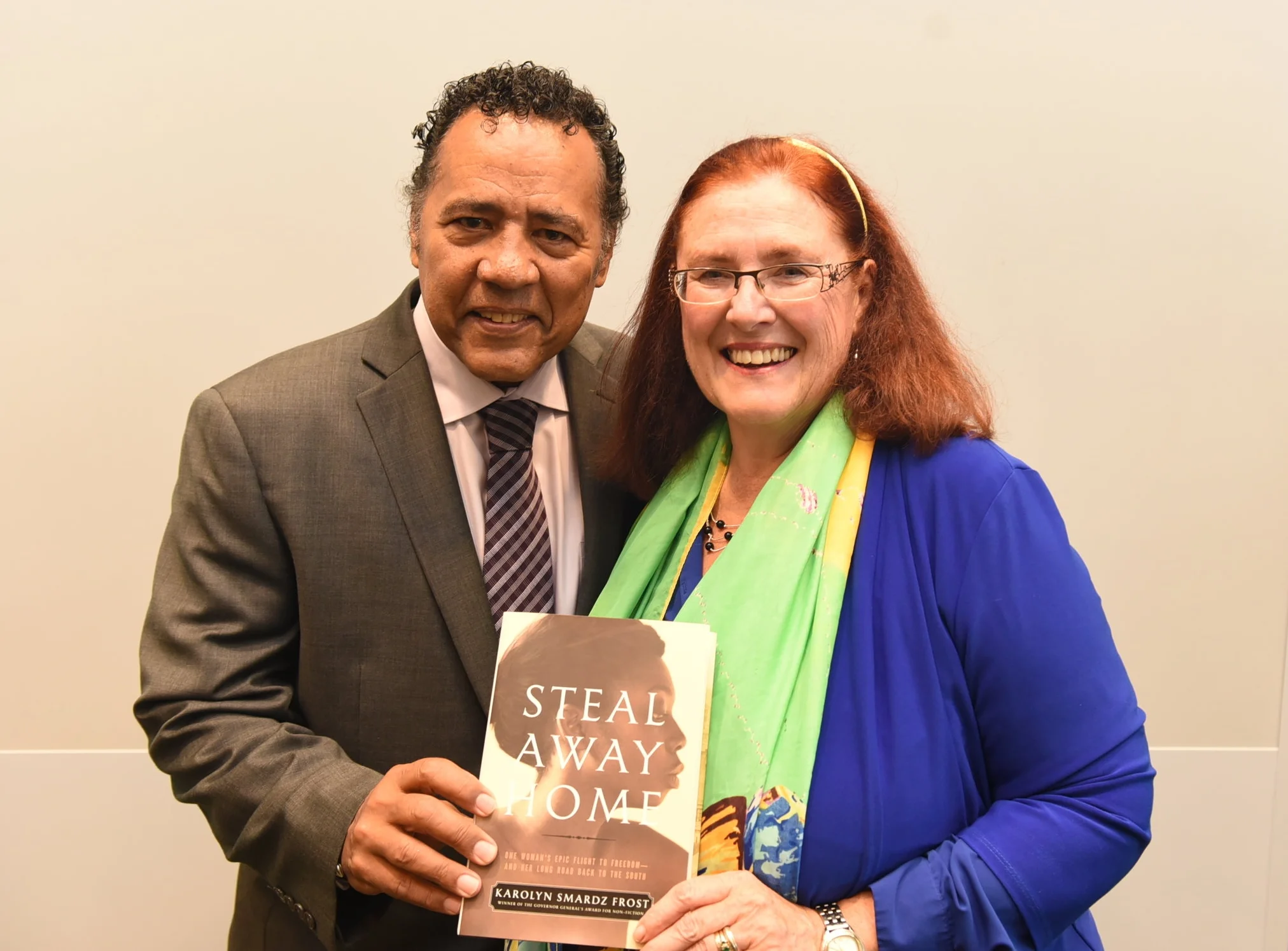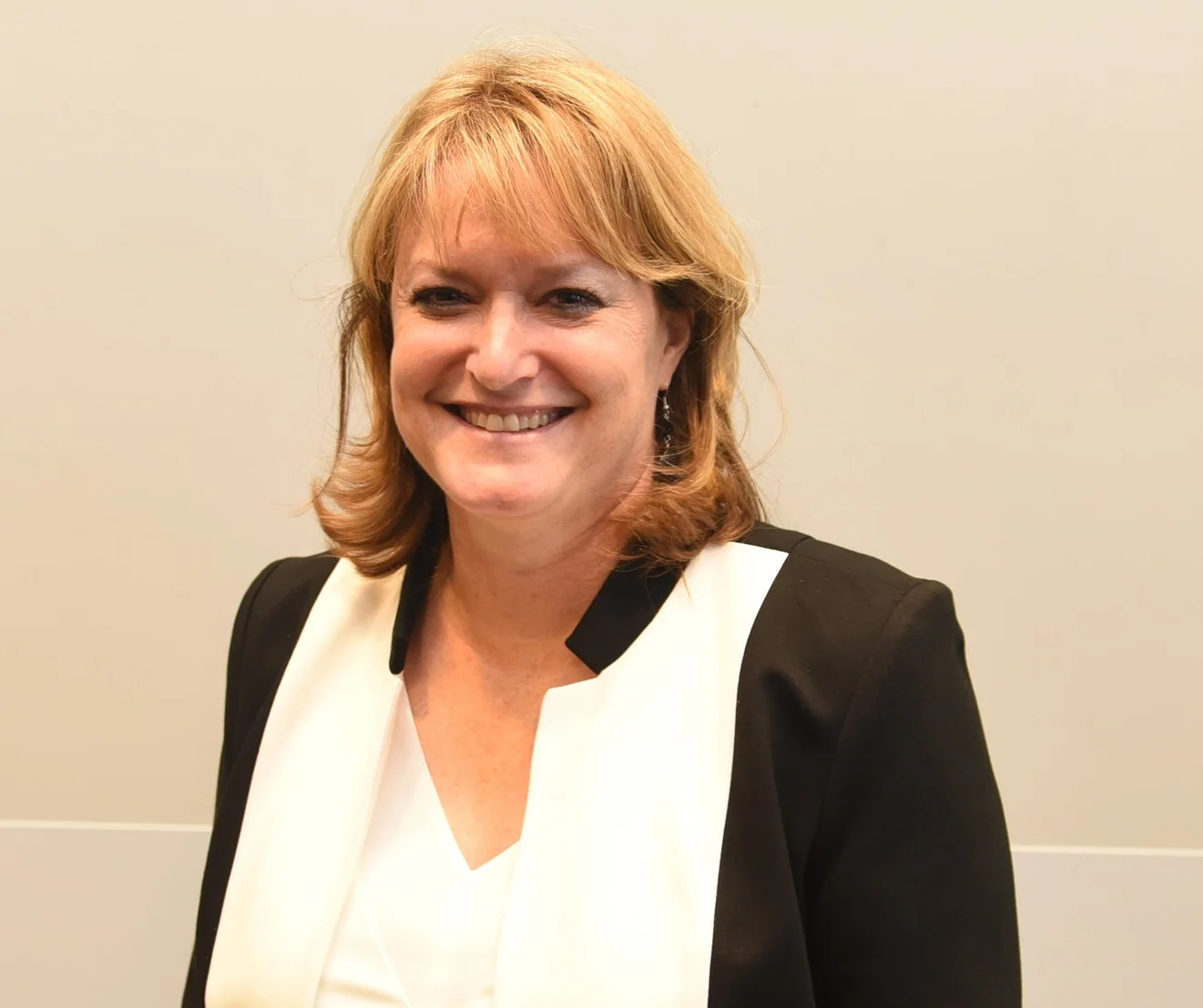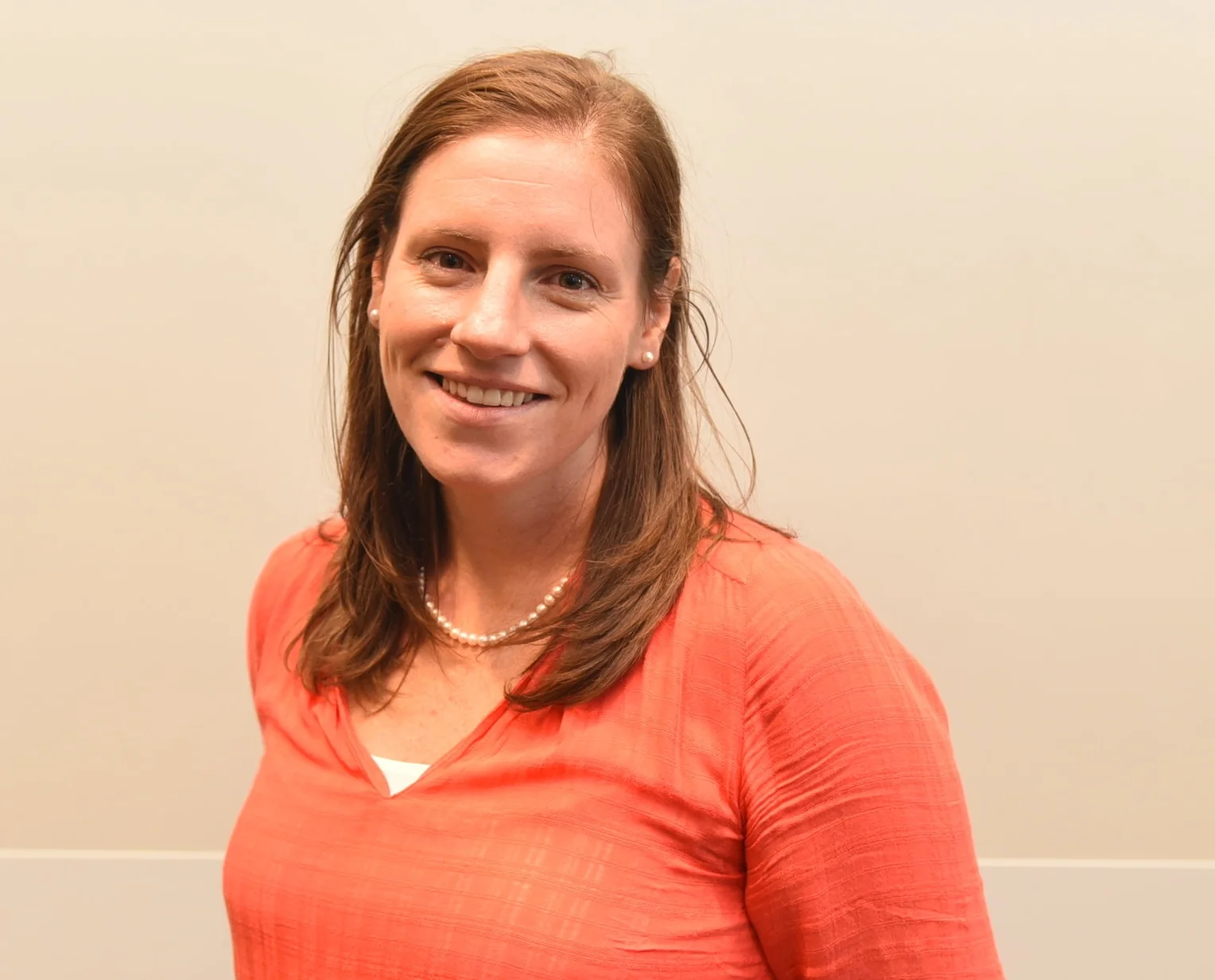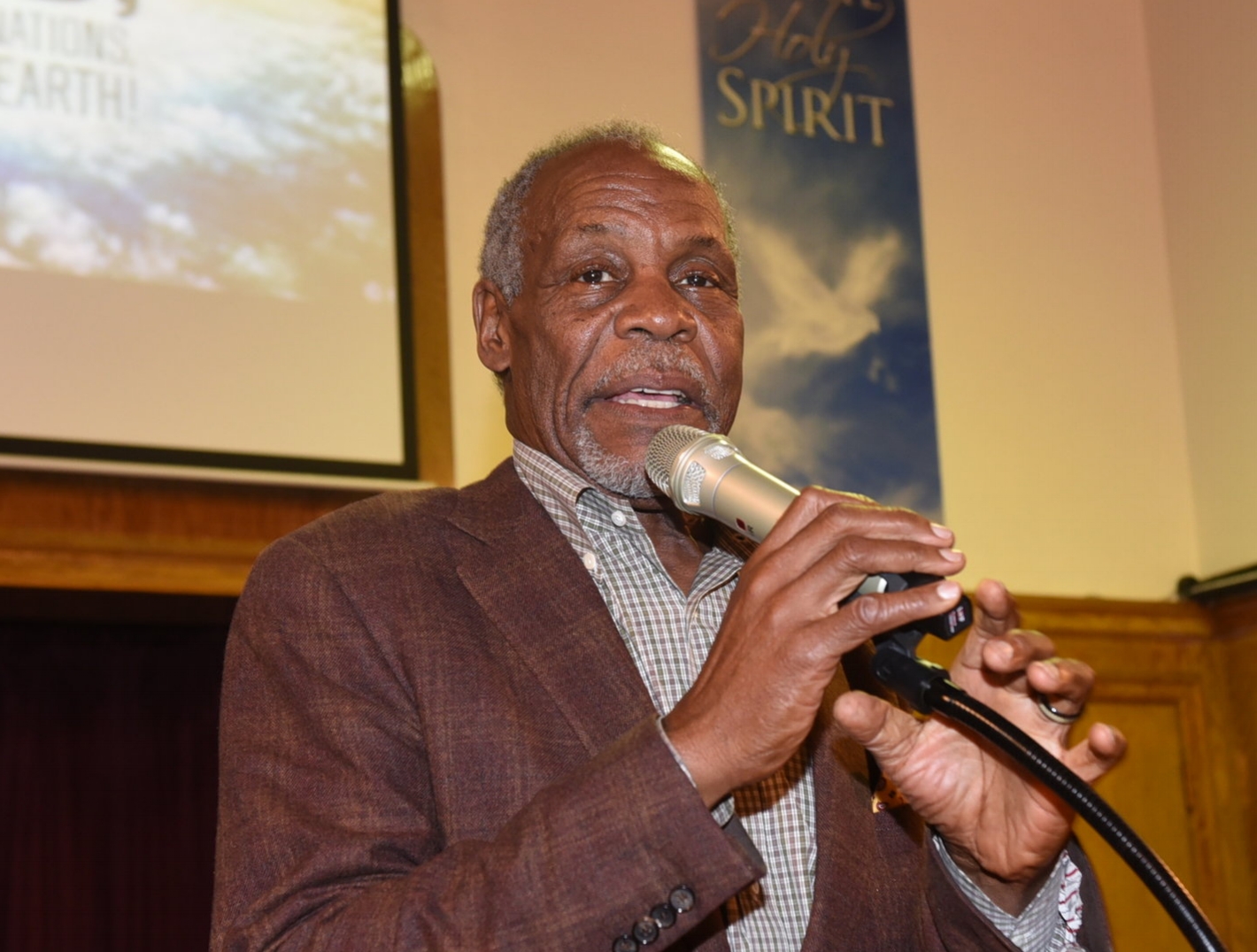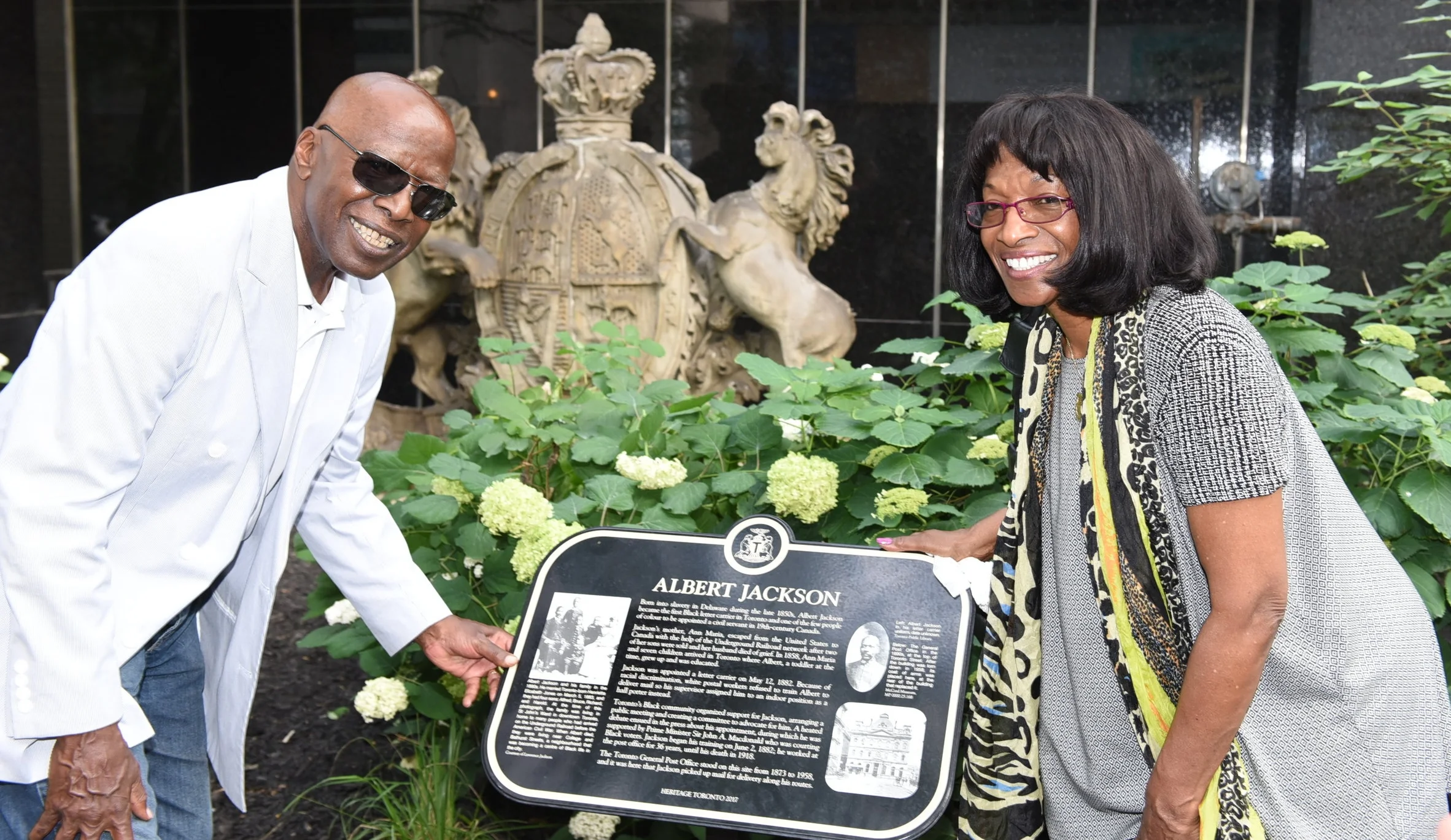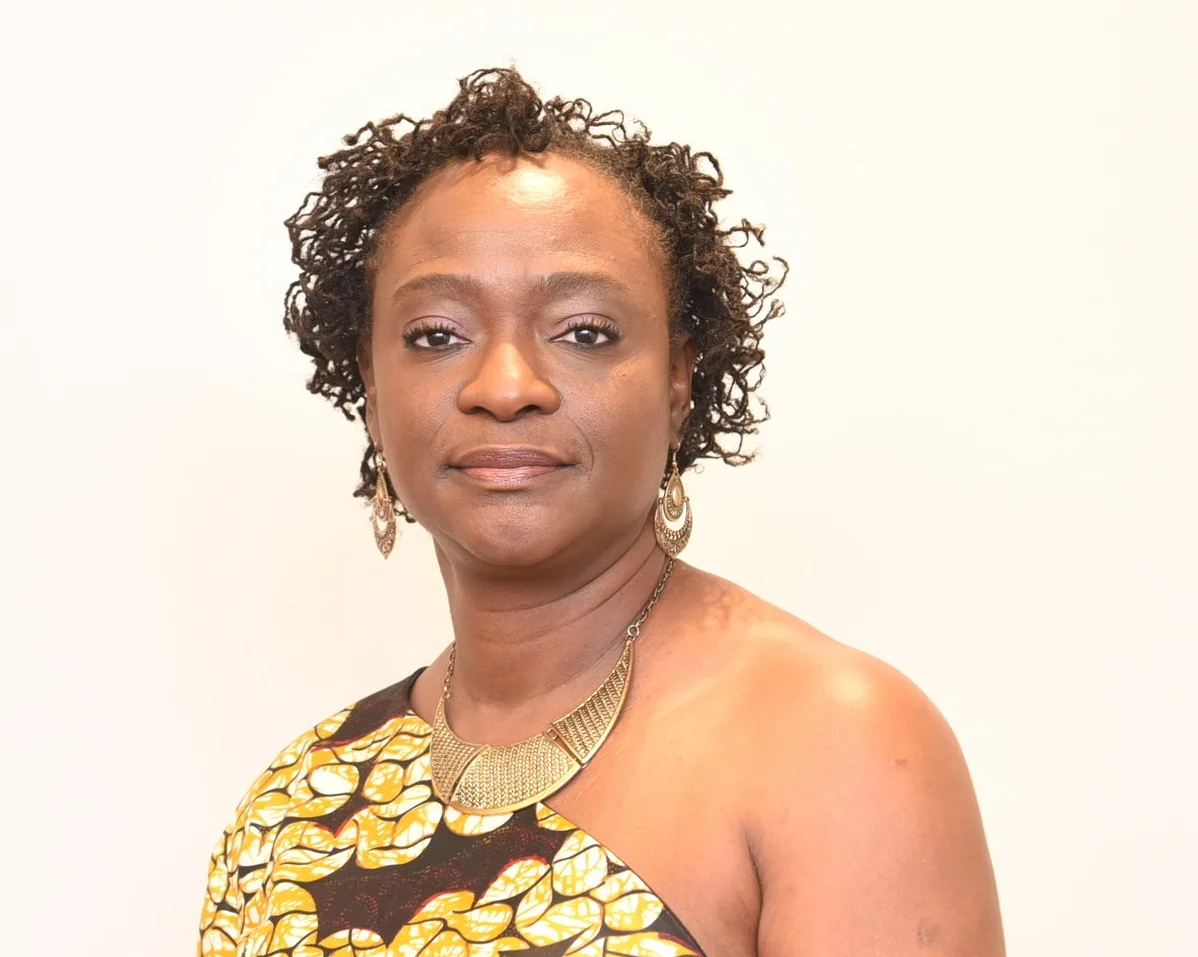Former slave had strong ties to Toronto
October 28, 2017
Though spending just 14 years in Toronto in the mid-19th century as a freedwoman, Cecelia Jane Reynolds’s story still resonates powerfully in this city
In 2005 while at The Filson Historical Society in Louisville searching for additional material to support her award-winning non-fiction book, ‘I’ve Got a Home in Glory Land: A Lost Tale of The Underground Railroad’, Dr. Karolyn Smardz Frost stumbled upon a cache of five letters that were addressed to Reynolds who was residing in Toronto.
They were penned by Fanny Thruston whose father bought Reynolds when she was just five months old.
Growing up as Fanny’s playmate, Reynolds – who was nine years old at the time -- was presented as a lady’s maid to the slave owner’s daughter when she turned 14.
Smardz Frost said the letters were warm and affectionate.
Dr. Karolyn Smardz Frost & Anthony Sherwood (Photo by Ron Fanfair)
“Cecelia, however, asked how much it would cost to buy her mother from the Thruston’s,” she said last week at a Freedom Seekers Toronto event celebrating Reynolds’ life. “Her mother was married and Fanny and her husband said something to the effect, ‘Slavery is against Christian values, we shouldn’t be doing all of this, but the cost of getting your mother is $600’. There are no letters like this in the public domain anywhere of back and forth correspondence between a slave owner and someone who had fled their service. This was really unique. What also struck me was Cecelia’s courageousness and tenacity.”
The adjunct professor at Acadia University in Nova Scotia believes Reynolds arranged her escape when she was 15 years old.
“Three years before Cecelia was presented to Fanny, she and her mother had watched as her father was led away in chains by slave dealers and sold,” said Smardz Frost who is the senior research fellow for African-Canadian History at York University’s Harriet Tubman Institute. “He ended up in a cotton field in Alabama and Cecelia never saw her dad again. She and Fanny travelled together and while they were in Washington, D.C., she must have seen that long coffle of slaves being taken in the very shadow of the Capitol building down by the Potomac to be sold south. I think that tripped her because she went back to Louisville and got in touch with the Underground Railroad there.”
Reynolds escaped in May 1846 when the Thruston family visited the Cataract House Hotel in Niagara Falls New York. The hotel waiters ran the busiest Underground Railroad station in the hotel’s basement.
Once on the Canadian side of Niagara Falls, she was brought to Toronto on a steam boat by 36-year-old Benjamin Pollard Holmes who was a waiter on the boat and an Underground Railroad conductor.
The widower, who had two sons, married the teenager in November 1846 at St. James Cathedral and settled in a home behind Osgoode Hall.
Learning to write while in Toronto, Reynolds despatched her first letter to Fanny inquiring if she could buy her mother. She got a response in 1850 and Pollard Holmes – in a bid to help his wife raise the money – went to Australia to take part in the gold rush. He died in 1859 after returning home and Reynolds remarried and went off to the Civil War with her new husband.
“When he came back wounded, they moved back to Louisville where she could find her mother who was free by that time,” Smardz Frost said. “She and Fanny lived two blocks apart for the rest of their lives.”
While doing a dig two years ago in the Ward near University Ave. and Dundas St. W., archaeologists unearthed hundreds of thousands of artifacts.
“I was blown away when I learnt that Infrastructure Ontario was digging up the block behind Osgoode Hall,” said Smardz Frost who authored ‘Steal Away Home: One Woman’s Epic Fight to Freedom and her Long Road Back to the South’ that tells the story of Reynolds’ flight to freedom in Canada and her return to her childhood home as a free woman years later.
On the excavated site were two homes that Reynolds owned on the old Centre St. The archaeologists hit the jackpot when they found most of her belongings left behind. The prized artifacts included a soup plate with an Uncle Tom Cabin scene, a porcelain Black doll and a vast array of chinaware.
“These people lived well,” said Smardz Frost. “Cecelia lived in what would have been a neighbourhood of immigrants just like the immigrant neighbourhoods in Toronto are today. It was a mixture of all kinds of people from all over the world making a community and helping each other. These were people who, once they became free, used their freedom well.”
Dr. Holly Martelle, the principal archaeologist at Timmins Martelle Heritage Consultants Inc., led the dig.
Dr. Holly Martelle (Photo by Ron Fanfair)
“We knew that the BME church and early settlers were there, but we didn’t know Cecelia story until Karolyn brought it to our attention,” she said. “To find Cecilia’s home and know that she lived there was an emotional experience.”
Abbey Flower, a heritage advisor with Infrastructure Ontario, was surprised by the large volume of unearthed artifacts.
Abbey Flower (Photo by Ron Fanfair)
“We knew there was a possibility of having some stuff there,” she said. “There was a parking lot there and nobody had built anything on it. We, however, had no idea we would uncover the wealth of information that we did. You got a sense of just how vibrant that community was by seeing all that material…Cecelia’s houses were among the last pieces that were excavated. We felt as if we had a connection to the place and the person.”
Martelle said the artifacts are being analyzed.
“We have to go through each piece and that could take about five years before a report is put together,” she added. “Once we are done, we have to find a repository for the collection.”
Hosted by Anthony Sherwood who is the great nephew of Captain William White who spearheaded the formation of Canada’s only All-lack expeditionary battalion and was the first Black to graduate from Acadia University and hold a commissioned rank in the British Empire, the two-day Freedom Seekers Toronto event was held at the Lucie and Thornton Blackburn Conference Centre at George Brown College.
Black History curriculum consultant Natasha Henry spoke about Emancipation Day celebrations between the 1840s and 1860s.
“Looking at early Black Toronto through that lens, you get to see who some of the people were and how they celebrated,” she said. “We also get to learn about some of the issues that were of concern to the Black community at that time.”
The Ontario Black History Society collaborated with George Brown College to co-host the event.


